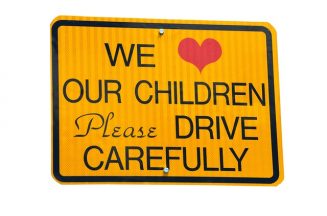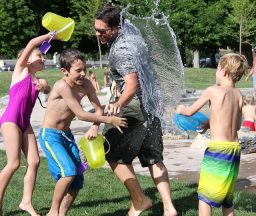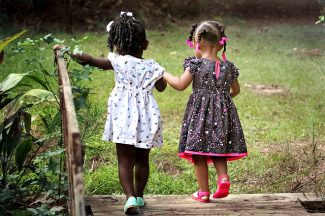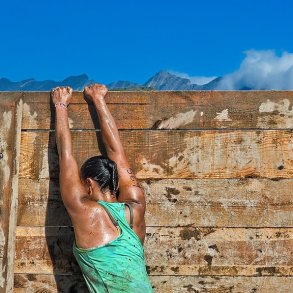By Lia Aurami for Enlivening Edge Magazine
Introduction by Jean-Paul Munsch, Guest Editor of EE Magazine’s Education edition:
This piece leaves me wide awake. Intrigued by the warm tone that is set from the very beginning, I’m struck by the human depth and the kindness of the questions. What looks like a checklist for educators is much more than that: it is a rich and stimulating source for all of us. With increasing consciousness, I ask myself while reading mindfully: Which question strikes me most? Which one triggers me most? Which question do I like most? And which one touches me most—and why?
If Teal as a stage in the development of consciousness transcends and includes all previous stages, then any situation created for the learning/education of children, which purports to be from Teal consciousness, must, it seems to me, involve the healthy inclusion of all stages represented in the children. In other words, all these aspects of being human, would—to the extent they were present and accounted for in the design of the situation—optimize the learning possible for the students.
These are my interpretations, based on my decade of study of Spiral Dynamics (link is to an overview of the book) stages; my words are meant to stimulate your own interpretations. At the least, we might consider these stages as dimensions of any educational situation, that could be used to evaluate it for completeness, effectiveness, and healthfulness.
These suggestions are meant to pertain to children of any age. And to any educational or learning context, whether that be a daycare, school, home-schooling, a training program, a class, a course, an apprenticeship, etc. For every child of every age in every situation, all the following elements could be present. It takes Teal consciousness to design such situations, and to creatively implement and keep refining them.
Of course, there are a huge number of other characteristics of educational/learning situations that would follow a developmental trajectory, and this is one simplified framework to help us spot gaps that might usefully get filled!
Beige
 Are the children kept warm, rested yet exercised, clean, and well-fed? Do they feel safe? Are their needs for movement and expressiveness given adequate scope? (Hint: children do not normally learn from listening while sitting in chairs.) Do they have adults they can cling to, retreat to, feel taken care of and supported by? Are they allowed to “run in packs” and engage in other behaviors like the young animals they are? Is their natural curiosity fed and encouraged?
Are the children kept warm, rested yet exercised, clean, and well-fed? Do they feel safe? Are their needs for movement and expressiveness given adequate scope? (Hint: children do not normally learn from listening while sitting in chairs.) Do they have adults they can cling to, retreat to, feel taken care of and supported by? Are they allowed to “run in packs” and engage in other behaviors like the young animals they are? Is their natural curiosity fed and encouraged?
Are they allowed to experiment and make mistakes that are regarded as ways to learn? Do they learn the basics of socializing behaviors, and the basics of social rules as well as laying foundations for the innate capacity for empathy? Is their environment stimulating but not over-stimulating, and is it at least esthetically pleasant if not beautiful?
Are they outdoors a lot of the time? Are they NOT subjected to harmful pollution of any kind, electromagnetic included? Is their sheer joy in being alive and active and aware, supported? What direct and respectful experiences do they have of other living creatures, plants, and other aspects of Nature?
Are their natural learning styles and preferences built on as strengths? (For example, do they learn best from visual, auditory, or kinesthetic cues, are their handedness preferences respected, etc.?)
Purple
 Do the children have a basic sense of belonging? How integrated is their family into the educational/learning situation? Is their sense of the wonder and mystery of life supported? Does each child have tasks and responsibilities and roles which help them feel part of a group? How exposed are they to folks of all ages? Are there sufficient routines, rules, and rituals to provide them with a healthy sense of stability, predictability, and mastery? Are they given glimpses of a larger world, enough to draw their curiosity but not so much that they feel helpless and overwhelmed? Do they learn to function in groups with differentiated roles? Are their unique natural talents and gifts encouraged to be exercised and flourish? Are they supported to laugh together, dance together, create together?
Do the children have a basic sense of belonging? How integrated is their family into the educational/learning situation? Is their sense of the wonder and mystery of life supported? Does each child have tasks and responsibilities and roles which help them feel part of a group? How exposed are they to folks of all ages? Are there sufficient routines, rules, and rituals to provide them with a healthy sense of stability, predictability, and mastery? Are they given glimpses of a larger world, enough to draw their curiosity but not so much that they feel helpless and overwhelmed? Do they learn to function in groups with differentiated roles? Are their unique natural talents and gifts encouraged to be exercised and flourish? Are they supported to laugh together, dance together, create together?
Red

Are they taught to take responsibility for and to exercise the authority of their own wellbeing, to the extent they are able? Are they allowed and encouraged to begin to meet their own needs? Is every aspect of their individuality respected and evoked? Are they allowed to begin to exercise leadership and influence with others? Are their long-term interests fostered such that they become experts at something? Is their unique creativity evoked and amplified? Are their quirks accepted?
Blue

Are there clear and consistently maintained boundaries, both physical and social, they must learn to respect in order to have safety and enjoyable human interactions? Are they encouraged to form relationships based on perceived similarities (rather than as previously, on the givenness of family or the unquestioned relationship of sheer physical proximity?) Is their ability to see similarities and differences in more abstract ways, amplified?
Orange
 As appropriate for their age:
As appropriate for their age:
Are they encouraged to set their own goals and work toward their own definition of success? Are they encouraged to find their own role models to emulate? Are they helped to understand that they have potentials and possibilities they can move toward? Is their scope of caring and concern encouraged to expand beyond even people who are similar, so they begin to form a respect for all of humanity that gets translated into caring behaviors? Do they learn to organize their activity toward a purpose, and set priorities based on the purpose?
Green
 As appropriate for their age:
As appropriate for their age:
Are their natural empathic capacities encouraged and supported? Are they taught some simple basic conflict-resolution strategies and encouraged to experiment with developing their own? Do they learn to really listen to others? Are they helped toward “emotional literacy” and supported in their natural growth toward self-understanding and self-acceptance? Do they receive both modeling of and instruction in considering the perspectives of others? Are they provided with experiences to differentiate power-over and empowerment?
Teal
 As appropriate for their age:
As appropriate for their age:
Are they supported to see something valuable in views they oppose? Are they helped to use purposes to set priorities and hierarchies of value? Do they receive experiences to perceive that internal consistency of values is important and feels good? Are they supported in perceiving not just relationships but systems, and in predicting the consequences of any change or action for every part of an affected system?
What questions would you add, and where would you put those? Are you thinking already about an educational situation and mapping the above questions onto it? How’s it mapping, and what is creatively arising in you from this exercise? What can you contribute to the usefulness of this kind of exercise? How useful would these practices be in the learning/education situations you have influence on?

Lia Aurami: I came across Spiral Dynamics Integral in 2006, and immediately absorbed it as a terrifically useful perspective on the development of consciousness in individuals and groups. It also facilitates expression of my sacred life mission: to amplify our human capacity for living, working, and relating within shared higher consciousness. Within Enlivening Edge, I energize a variety of roles to satisfy the variety of my life experience. This article emerged partly from my years teaching kids and grownups, and being a clinical psychologist.





Dear Alia. I love the way you structured this and YES, my mind went over one pedagogical situation after the other and scanning of my own pedagogical, ethical etc principals. Thank you ❤️.
A question came up based on a thought: In a pedagogical setting, not based on TEAL, the challenge is different. I find that when trying to advise based on a TEAL foundation I speak more from the heart and a person centered understanding and the school setting I work in, emanates from a curriculum and goal oriented understanding. I either wrap the TEAL approach into their own jargon and/or put the TEAL approach into the little cracks that open, when I describe situations they experience, with TEAL approaches I know that gives results. I am wondering how you or anyone else feels/have experiences about this?
I work as a school consultant (specializing in children’s learning and reading disabilities) in a community in Denmark and I love my work, given the chance to advise and help many teachers and principals.
Thanks again Alia
Hugs
Nina R. Kledal
Hi Nina, Yes, it is always a challenge to introduce later-stage notions into an earlier-stage context. I think your approaches of translating into their language or dropping seeds into cracks, are indeed the best approaches.
I now add Turquoise to the list of educational-setting design principles from this article!
TURQUOISE
Has someone perceptive of subtle energies designed the learning environment to be supportive and harmonious for the children, for example, by using Feng Shui?
Is the subtle energetic environment monitored and adjusted to keep it supportive and harmonious?
Are the subtle-energy-sensing capacities of the children accepted, encouraged, and made useful in practical ways?
If a child expresses an experience, feeling, or idea that doesn’t match consensus reality, is that accepted without judgment even if not “agreed with?”
Are the children encouraged to daydream and envision their ideals, and if they feel moved, to develop practical steps toward manifesting those?
Is the re-enchantment of the world from PURPLE supported in ways that allow the children who are capable, to hold the PURPLE perspectives in balance with what they “know” in other ways?
Are the children supported in expanding their notions of what is real, and what are various ways to “know” something, while allowing them to be functional in their life setting?
Are the children given the opportunity to learn basic energy hygiene practices and basic energy-health practices such as Chi Qong, Tai Chi Ch’uan, or various forms of yoga?
Are the empathic/”highly sensitive” children supported to learn to discern sources and kinds of energy, and to set and maintain boundaries healthy for themselves?
Are the children who are ready encouraged and supported to expand their personal identity to larger contexts such as humanity, the planet, and beyond, and to include in their circle of care as much as they are capable of holding, in as long a timespan as they seem able to comprehend?
Do the children see adult examples of a joyful service orientation to life?
Are the children treated as equals by the adults, in every way in which equality is appropriate—rather than only as students, pupils, or learners? Are the adults prepared to learn from the children?
Are the children facilitated in forming teams to work not only on practical projects, but on co-creating visions and intentions?
Are the children given vocabulary to help them choose descriptions of individual and group subtle-energy experiences they are having, and at the same time, supported in valuing non-linear and non-verbal understandings?
Alia, this is wise and wonderful. Thank you.